We left Kobe through a steaming haze. In the background, the mountains were hidden by dark curtains of rain. Lightning flashed and thunder cracked just as the ferry’s engines revved up to reverse us out of the dock.
But the thunderstorms hogged the mountains, out at sea, beyond the concrete pincers of the harbour entrance, all was calm. The water was bright with an insipid yellow mist hovering over it. The ferry was Showa era. The lounge still had the faint whiff of smoke from an era when smoking in a confined space in the middle of the water was still a reasonable idea. Tacky cellophane curtains separated maroon seats with noodle-bowl motifs over a stained grey carpet.
We passed under the great suspension bridge to Akashi Island in a long line of boats like a World War Two trans-Atlantic convoy. Beyond, the sea was smooth, sparkling, the land on the other side just the faintest shape through the haze. I got a Setouchi lemonade from the small snack shop, and just to make sure I got the full Setouchi taste from it, plucked the softened lemon slices from the still-melting ice and ate them too.
The ferry throbbed its way to Shodoshima, finally curving in before the headland where the book and film adapations of Sakae Tsuboi’s Twenty-Four Eyes (二十四の瞳) were set and arriving at Sakate port. There, we were greeted by a spiky silver ball, like a cross between an old sea mine and a disco ball, with a silver dragon perched on top.
We were hurried off the ferry, only to have to wait a good thirty minutes for the next bus to take us to our hotel. Notice how I say we and us, because this time I was accompanied by my young daughter. So, no long hikes on Shodoshima, there will be precious little walking in this newsletter! The island does have a mini-version of Shikoku’s 88 temple pilgrimage trail, but with the heat and child-in-tow, there was no way I would be doing any of this.
After a long bus ride on the olive bus (the island really does plug its olives!), we were deposited in Tonosho, a town at the far west of Shodoshima, where we lugged our heavy rucksacks through quietly darkening lanes, past a beach, and up towards what we thought was our hotel. At the bottom of a steep driveway I had a moment of doubt. The name on the signboard at the driveway entrance didn’t match the one on our online booking. There was a suspiciously culty vibe to the name on the signboard, and why was it advertising itself as a research centre? I checked Google Maps. No, this was definitely the right place. Up the driveway we went, as bats skimmed overhead and insects whined in our ears.
The hotel was a pleasant but dull peachy-orange colour. A colour common on buildings across southern Austria and northern Italy, but rare in Japan. We opened the door, checked in as per the instructions on the online tablet, and realised the place was totally deserted. The creepy, culty vibe wasn’t helped by the collection of books I discovered as we went in. Several books on the Jimintou Liberal Democrat governing party, mixed with others on self-improvement and obscure art.
I had eaten nothing since I lunch before the ferry, my daughter had eaten karaage fried chicken on the ferry. But the thought of walking all the way back to the centre of Tonosho through the dark was too much. Dinner was half a tube of Chip Star each.
The walk to and from the hotel from the centre of Tonosho would become our daily walk during our stay. Down, past the beach with its ramshackle shuttered shacks, selling noodles and shaved ice, past the mikan orange warehouse, with its plastic crates, through the Olive Onsen shopping centre to escape the heat for a few minutes, before re-emerging onto the hot-plate of the car park, past the YouTuber-paradise abandoned hotel on the seafront, past the Angel Road (a series of rocky outcrops connected by a Mont-St-Michel-like tidal sandbar), a quick dive into Seven-Eleven for another moment of coolness and a refreshing drink, then through the narrow streets (always choosing the shadier side), until we reached the centre of Tonosho.
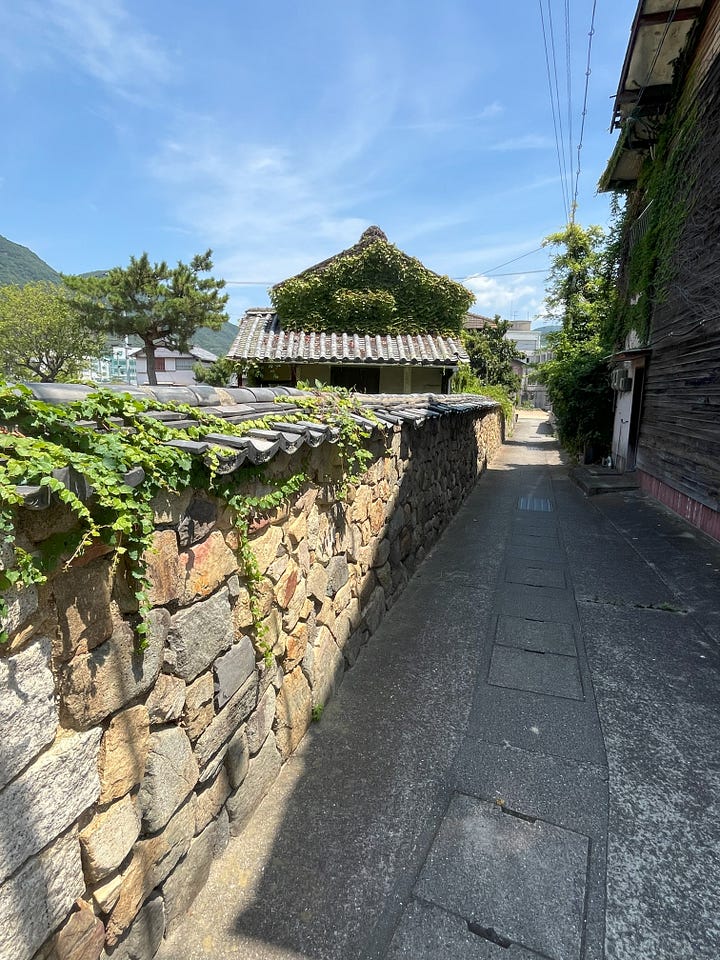
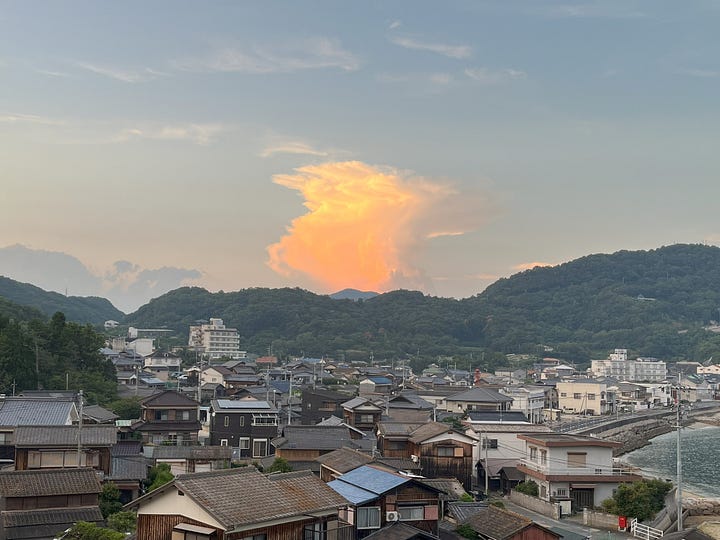
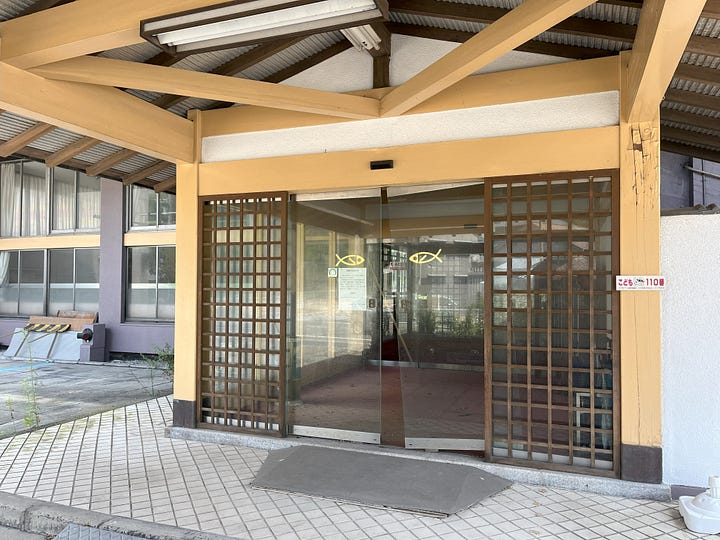
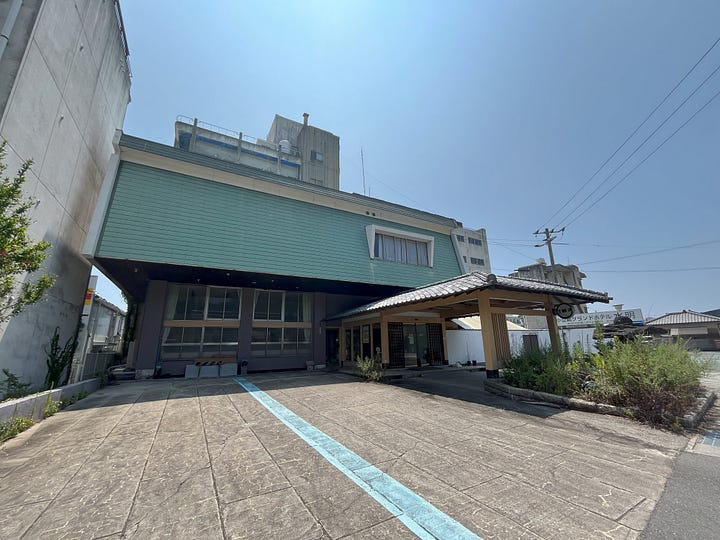
Donald Richie briefly visits Tonosho on his journey around the Inland Sea. A quick stop to see the sculpture commemorating the movie of Twenty-Four Eyes, and he’s off again, seeking adventure (mainly with women) and an old, unspoiled Japan. He doesn’t find much of either. He’s around forty when he makes his trip, entering middle-age, and not quite ready to accept he’s getting older, that the world changes around you, and some things are lost forever.
The islands do still have a slightly backward feel to them, but mostly because of the shadow of the Covid epidemic rather than anything explicitly old-fashioned. Instructions about masks and alcohol sprays have lingered longer here than they have on the mainland. They also though, provide a glimpse into Japan’s future. The Joyfull restaurant had only two staff during the lunchtime rush, leaving nobody to ask us nanmeisama? at the entrance, and leaving the joyfully whistling server robot stuck for fifteen minutes by a table of elderly people, who luckily found it joyfully amusing. When we entered, half the tables were uncleared, and we had to scavenge our cutlery from one of those uncleared tables as none came on the robot server. Family restaurants in cities on the mainland are now often half-staffed by foreign students, but here in the isolation of the Inland Sea islands, there are almost no foreign students. The neighbouring two restaurants to Joyfull were both permanently closed. When foreign labour starts running short, can the low-cost family restaurant model survive, even with robots and online ordering?
The Yokai museum in the centre of Tonosho also seemed to be running with just two staff. Using audio guides run from an app on your cell phone and codes to enter the various buildings scattered around Tonosho that make up the museum, it works really well. It’s a good use of old buildings, and well worth visiting.
Angel Road is the scenic highlight of Tonosho — chunks of desert-coloured rocks, crowned with thickets of black-ridge oak rising out of a blue-green sea and connected by sandbars topped with a gaggle of Taiwanese tourists.
Olives are Shodoshima’s USP, they are not however a key component of the island’s cuisine. Sure, there’s olive popcorn, olive noodles (noodles made with probably imported olive oil and green food dye), olive leaf tea, olive soda (tasted like Appletizer), olive biscuits, olive jelly, olive puddings, olive honey, olive just about anything you could imagine, but when, at my daughter’s suggestion, I went to get some actual olives as a souvenir from the supermarket, I found there weren’t any. Even the standard supermarkets in Kobe have jars of olives in brine, and if you want a slighly better variety and quality, you can head to an import food store like Jupiter or Kaldi. There was olive oil in the main part of the supermarket, but none of it was from Shodoshima. Only a special souvenir section sold olive oil in tiny expensive bottles. It makes sense, because the olive groves on Shodoshima are actually tiny and not remotely competitive in the global olive oil market. As Donald Richie keeps banging on about in the “Inland Sea”, it’s the surface that counts in Japan, and so we need a Greek windmill to really rub that superficial olive oil in.
The windmill is at Shodoshima Olive Park, and apparently inspired (I suspect very loosely) some scenes in the animation Kiki’s Delivery Service. The result is lots of people trying to get shots of themselves jumping with rented broomsticks so they appear to be flying like Kiki.
We returned to Kobe on a bigger, more modern ferry. I missed the comfy Showa-era seats of our outbound ferry, on the way back we had to make do with some distinctively Reiwa-era hard eggshell-shaped chairs lined up against the walls like a doctor’s waiting room. The storms we had escaped when we left Kobe were waiting for us when we came back.
A final note: Sakae Tsuboi’s Twenty-Four Eyes (二十四の瞳), I suspect is much a better movie than it is a book, although there are those that say this is like comparing apples and oranges. I read the book (translated into English) and it was a little dry, also the names and characters of all the children quickly get confusing, which probably doesn’t happen in the film. Unfortunately, I haven’t managed to see the full movie, just some clips, but what I have seen looks very good.


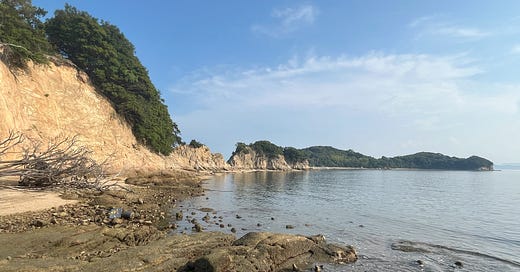


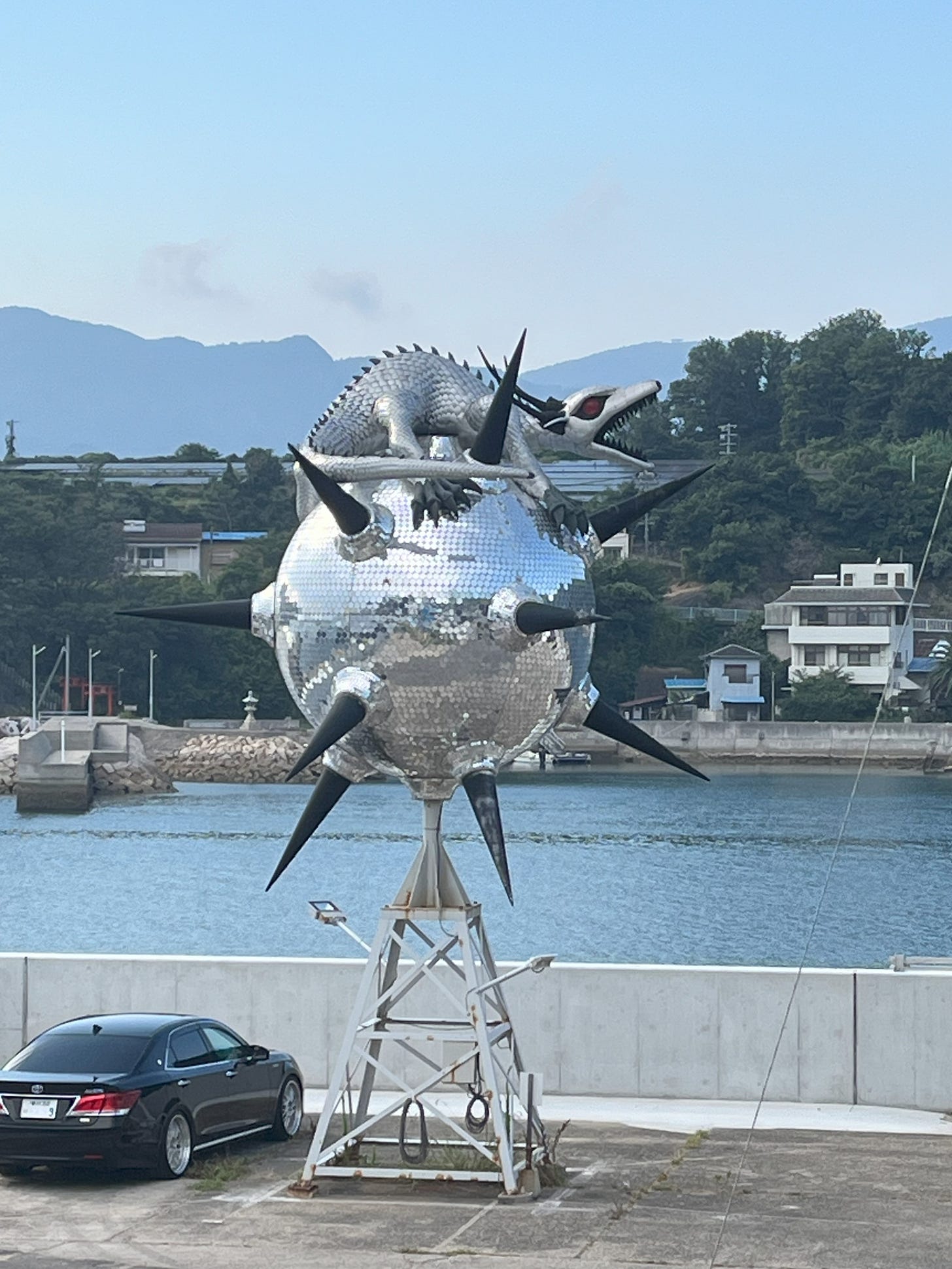
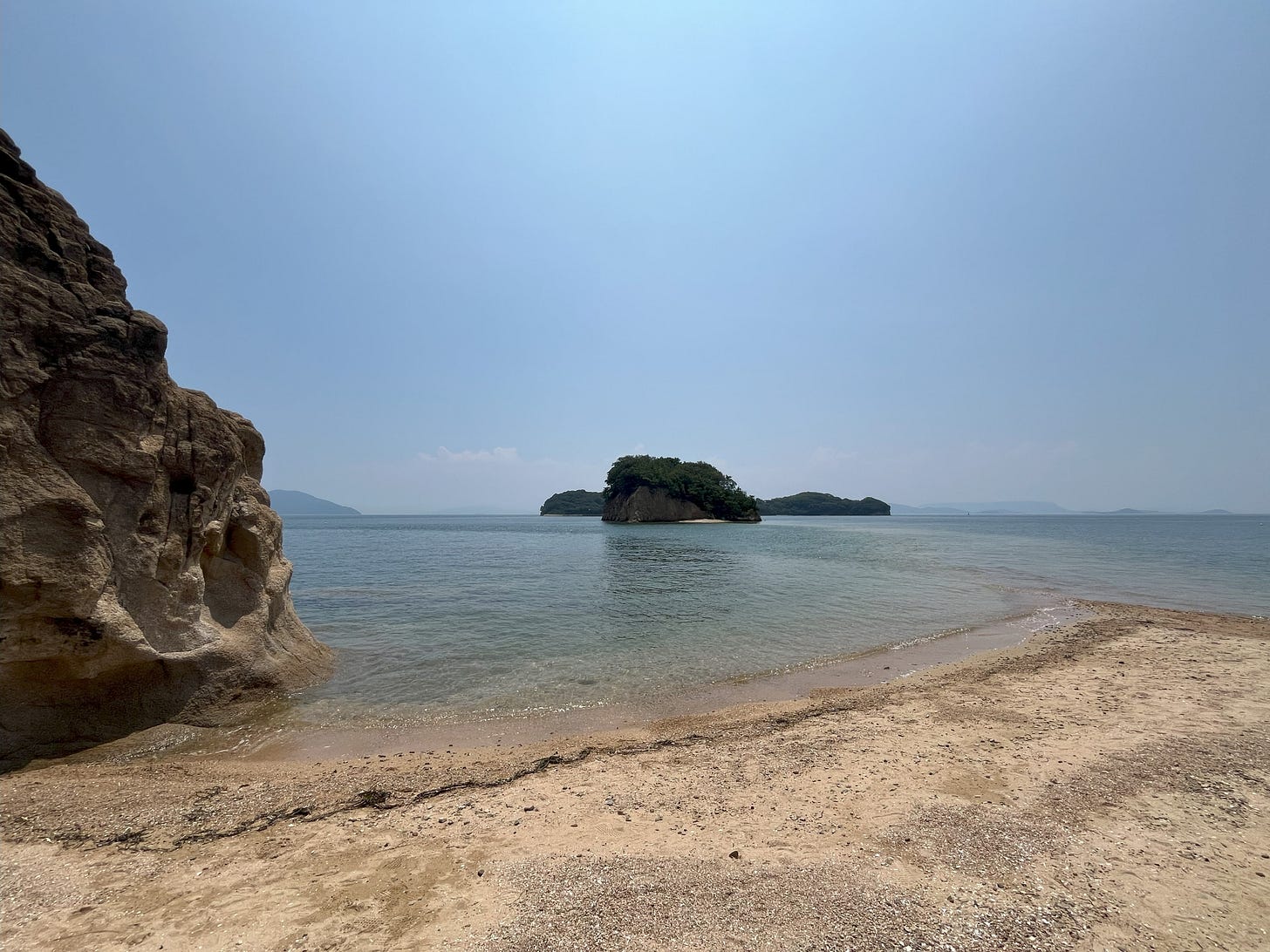

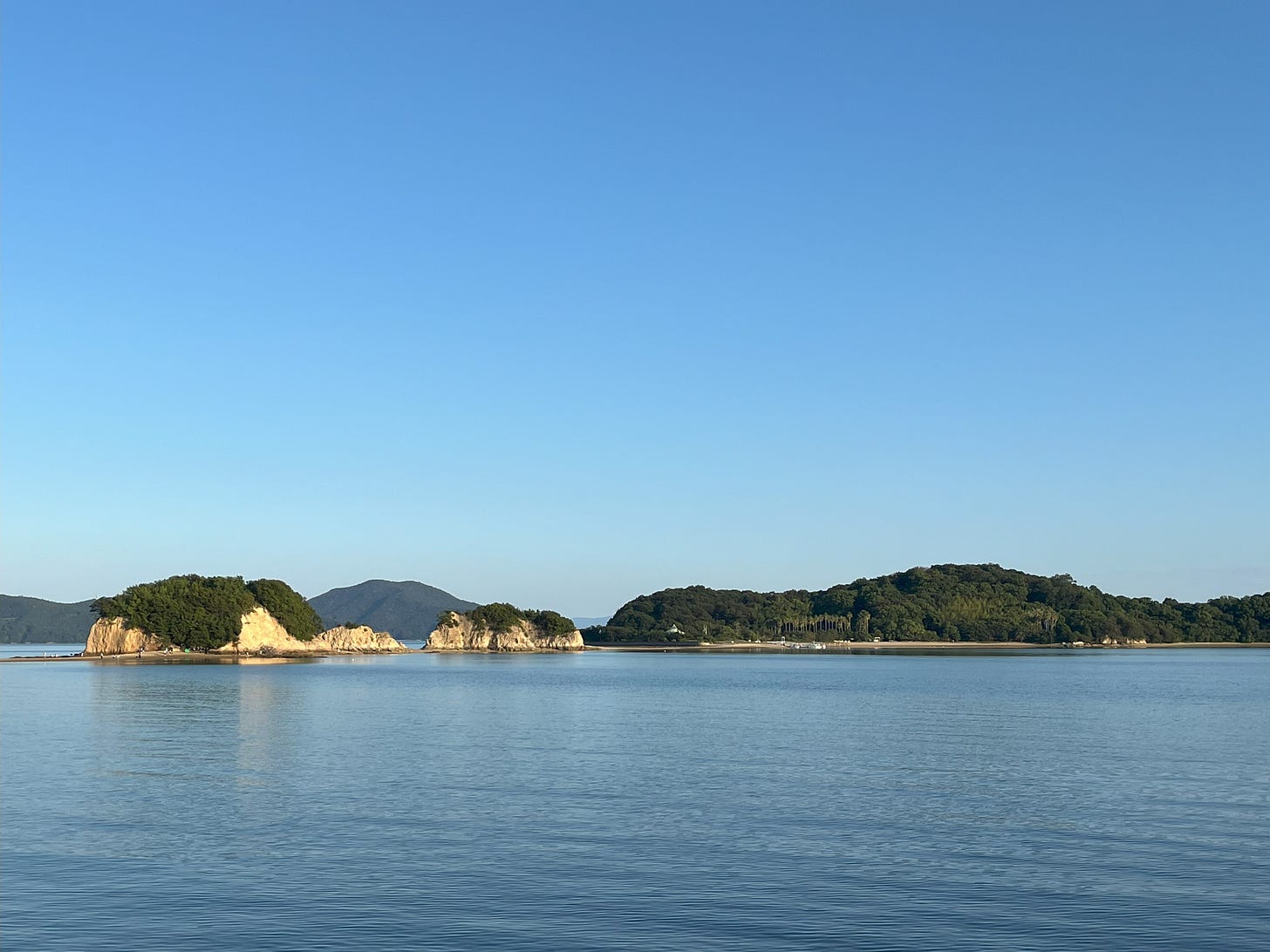
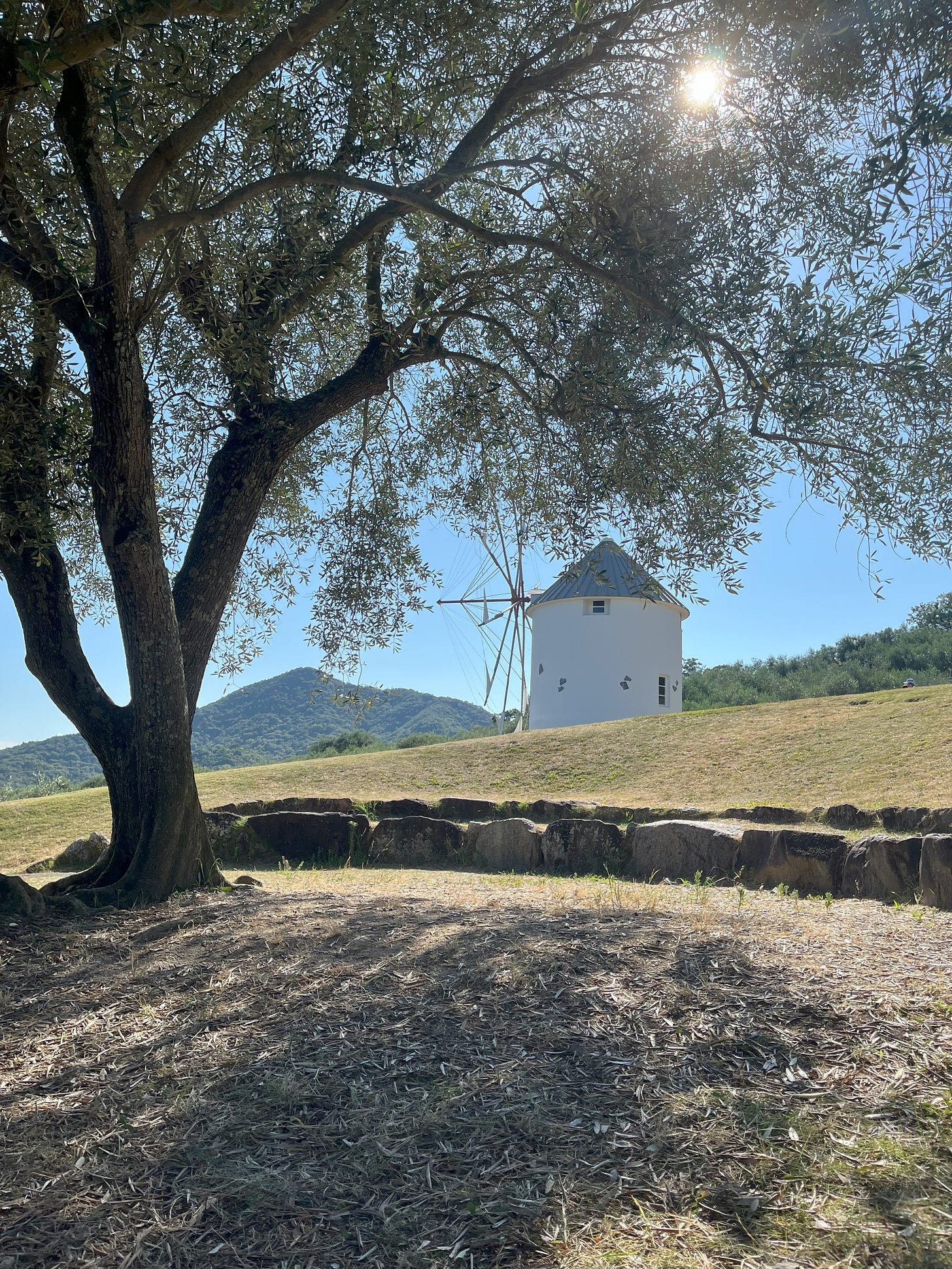
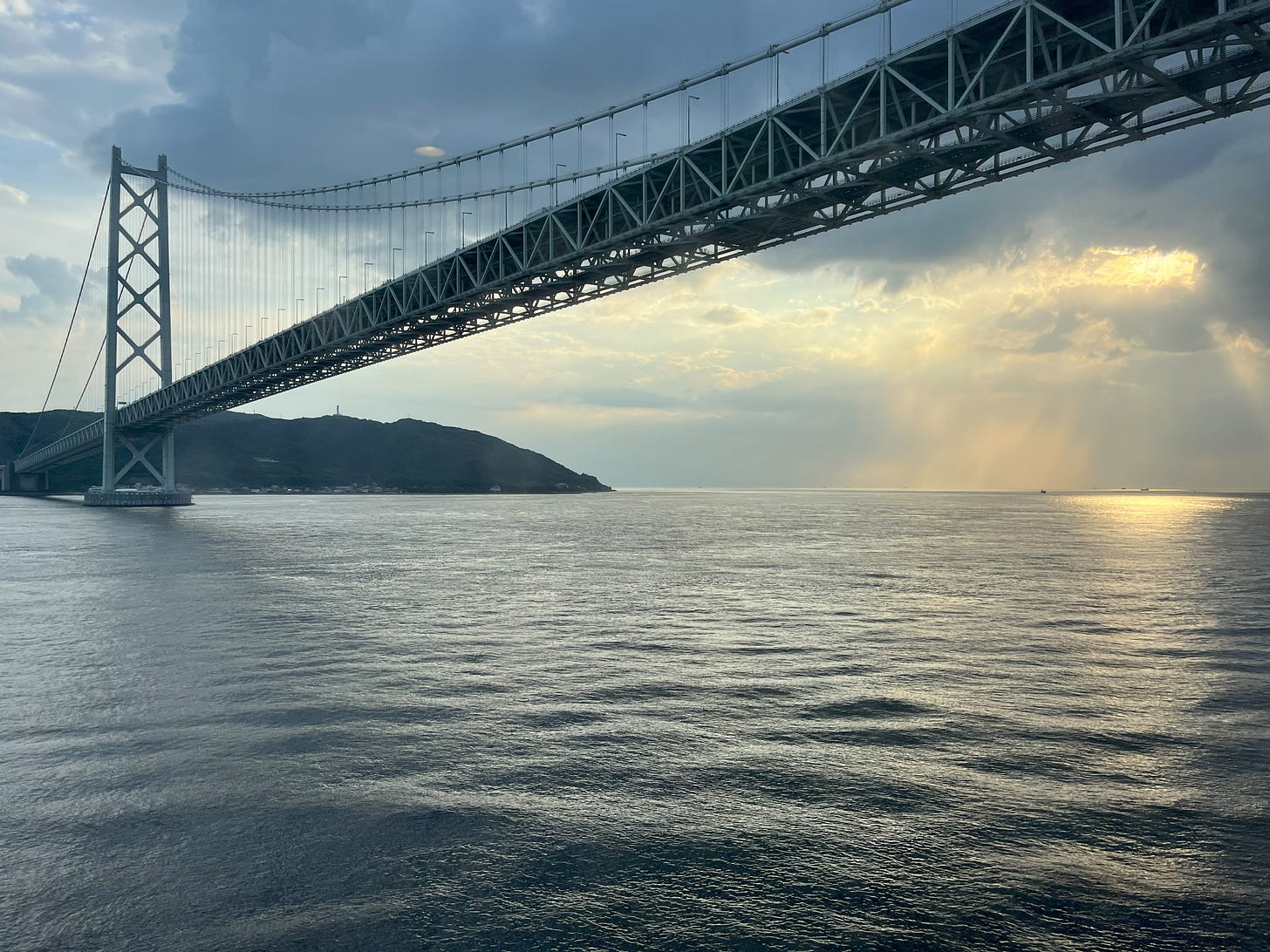
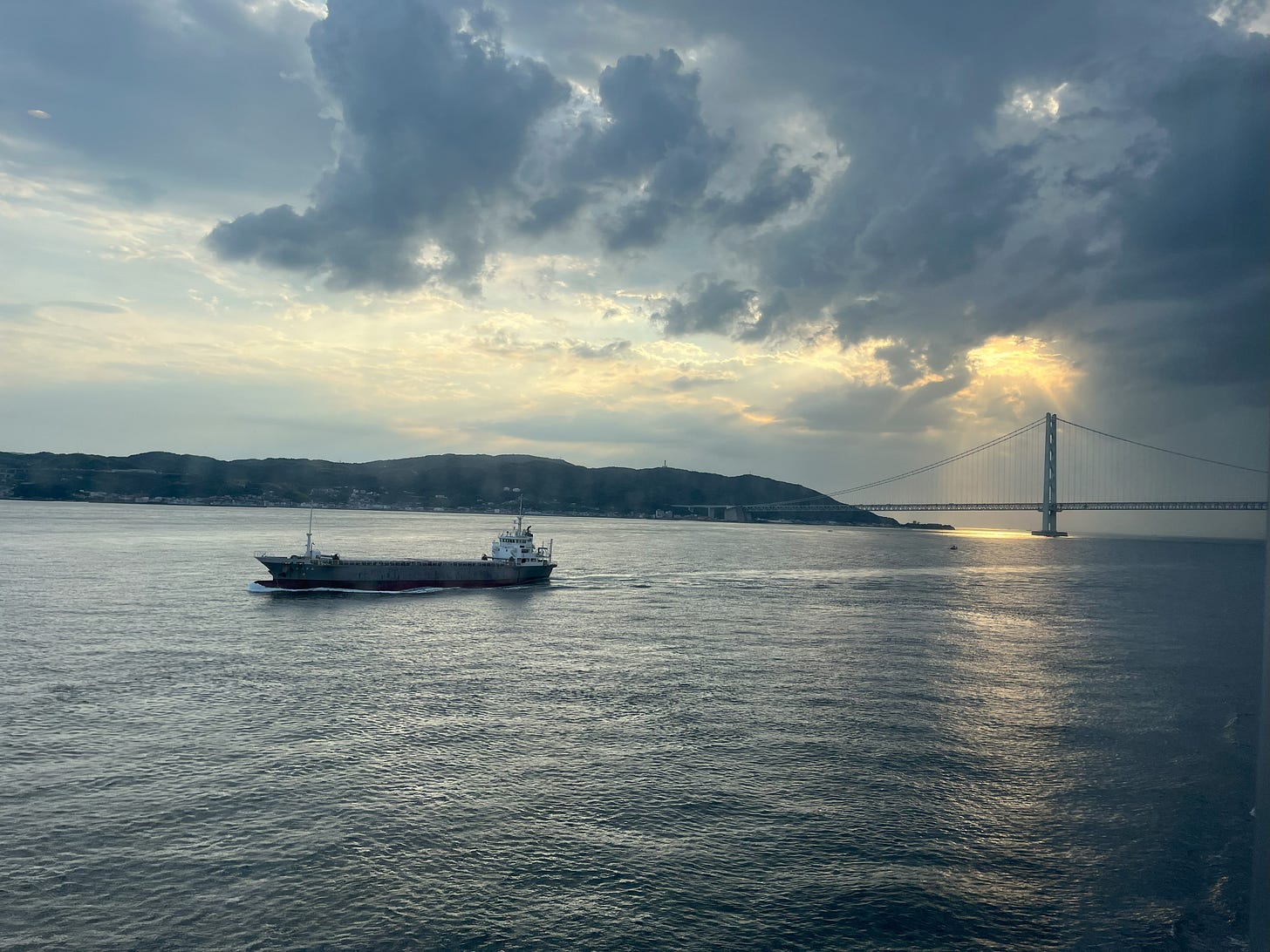
Sad you had a pretty so-so experience of the island.
It's probably one of the most beautiful places I know, but the island's tourism office is just so bad at promoting it. Or rather it's stuck in a Showa Era way of doing tourism (well, most Japanese tourists are too, so, I guess it still works).
For starters, yes, most of the hotels are near Angel Road (I'm curious about which one your hotel way, the cultish atmosphere intrigues me) because it is "the view" of the island (if you're there at the right time with the right tide) so everyone stays in and around Tonosho but truth is, the central (inland) and eastern parts of the island as well as the southern peninsula are the best parts. (basically Tonosho is the least interesting part, it's just where most people live)
The olive thing is annoying. As you notice, the entire island is "olive this" "olive that" but it's just a gimmick as olives are not actually part of the island's culture and history.
And at the same time, the island has some of the best somen and soy sauce in the country (I will die on the hill that it has the best soy sauce in the country) but that's not exotic enough for the tourism office. So both industries are struggling to survive.
The windmill and the Kiki gimmick (another gimmick): it's not about Ghibli's anime but because the recent live action remake was shot (and probably takes place?) on the island. There's also a famous current anime taking place on the island, and it has been attracting more and more tourists.
24 Eyes: I haven't read the book but the original movie is very good (of course, it's a 1950s Japanese movie, so it's very slow and contemplative). It's very touching and it's important because it's the first time a mainstream Japanese work of art dared to look at the war in the eyes.
The studio village is definitely worth a visit (I try to go every time I go to the island) because it's a very good reconstruction of early Showa Japan. Another thing that's almost never mentioned explicitely (because facts matter less than good feelings in Japan) is that the movie studio was built for the 1980s remake of the movie. In the 1950s there was no need to rebuild such buildings they were still all around the island. The school from the original movie was preserved, it's located a few hundred meters before the studio village.
So, yes, all in all, Shodoshima is really a stunning place, especially its nature and traditional culture, but the powers-that-be are terrible at promoting it, all they care about is squeezing as many yen as they can from tourists thanks to a bunch of stupid gimmicks.
If you have the opportunity, I advise you to walk the pilgrimage one day (probably not in summer), it takes about a week, and then you'll discover the true Shodoshima.
Indeed, the movie version of Twenty-four Eyes is very good. Poetic and sad, and a scathing anti-war statement.
Sorry for a bit of self-advertising, but here's a link to my four-part report on Shodoshima (mainly connected to shoyu production). https://giannisimone.substack.com/p/1-adventures-in-shodoshima